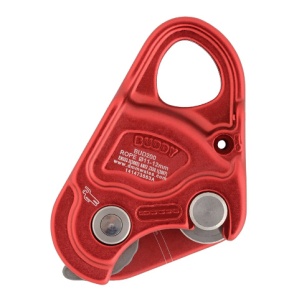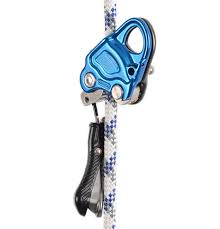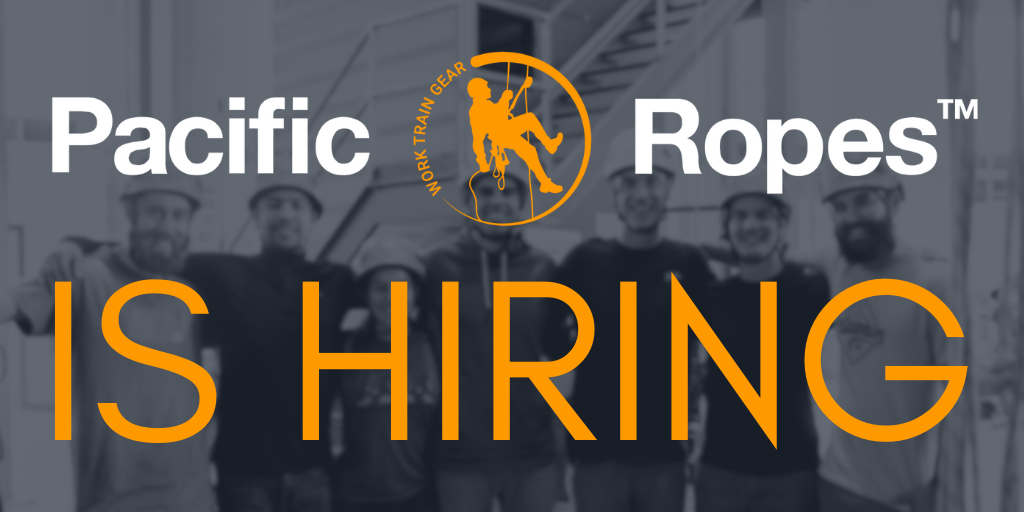This month we are focusing our attention on yet another back-up device! We made a left hand turn away from Petzl-ville this time, however, and with the help of our friends at Carleton Rescue Equipment, decided on a rather unexpected gear choice: the DMM Catch. For those of you who are unfamiliar with DMM, they are a climbing and mountaineering gear manufacturer based in Northern Wales, UK, who only recently have tried their hand at the Rope Access gear game. Like other climbing and mountaineering gear designers, DMM realized the design/function overlap in creating gear technology for industrial rope work and rescue, and in our community, DMM is probably best known for the release of their DMM Buddy 200.
Since 1981, DMM has aimed to “make the best possible equipment for the best possible price”; unfortunately, this is where DMM (primarily with the release of the Catch) quickly falls short in its messaging and performance for us—so let’s just cut right to the chase, shall we!?
First and foremost, the DMM Catch falls in the middle-to-upper price range among current Rope Access back-up devices, and given this, it is highly refutable that this is the “best possible” device on the market for its standing price point. What is immediately of concern in relation to this mis-messaging, is realizing the time it actually took for this device to hit the back-up device market in the first place. It was announced for release approximately 3 years prior to its actual for-purchase date, and was not available in retail spaces in Canada until the beginning of 2015. There is some obvious speculation related to answering why this delay occurred, but after spending hours on rope testing this device, we can only assume the Catch did not test or review sufficiently in its beginning stages.
As our video discusses, there are some reasons why the Catch has even been accepted into the Rope Access marketplace, however, when you compare it to existing back-up devices, these “pros” in no way speak volumes about its performance overall.
As a tech, if you absolutely had to make this purchase, here are the things you are going to be able to live with:
1) Its signature Towable Release Mechanism (TRM) cannot defeat the device as our video details. However, for the impatient roper out there, the TRM requires a lot of finessing to stay latched while completing work and can be difficult to trail during a decent.
2) We chose this device initially because it is approved for use in a two-person load in a Rope Access rescue situation. This device can hold 200 KG’s, but as you well know, this doesn’t exactly make the Catch stand out above the rest- it very simply accommodates the safety standard for a 2 person Rope Access rescue.
3) The Catch does not require a shock absorber, which can be viewed as a positive when you compare it to similar Petzl products that do require a shock pack.
4) The cost of a Catch is $230 versus the Petzl ASAP Lock, which rings in at approximately $300 CAD. If cost is a concern for you, this is an adequate and IRATA/SPRAT approved option for a back-up device.
And now the bad news. The major downfalls of the DMM Catch are as follows:
1) Some people do not agree with me entirely on this point, but the TRM is simply clutter and without a doubt a bizarre design choice on the part of DMM. Sure, the TRM provides a feature not offered by any another back-up device, but it lacks consistency and ease during use. The handle does not stay efficiently in place at the best of times (as our video demonstrates) and this can lead to frustration while on rope, which no tech should experience while on site or in a sometimes stressful work environment.
2) The DMM has been known to skip down wet, dirty or icy rope during a decent, which makes this immediately unfavorable for outdoor techs working in less than ideal weather conditions.
3) A major drawback is that in comparison to what already exists in the back-up device market, you are better off choosing a Kong that is lower in price and more design efficient or paying the extra $70 for the ASAP or ASAP Lock, which are arguably the best back-up devices available to rope techs currently.
4) Most importantly, for our Rope Access community and teams, some of us feel that performing a rescue with this device is not ideal. In a panic or high-stress situation, the TRM may be more of a nuisance than anything else to descend with, and with the added pressure of rescuing a body, the towable cord may do more harm than good, giving a tech more stress than uncomplicated success.
For us, the Catch is a perfect example of a gear device you will want to see or test in action before you make this purchase for your kit. It sounds interesting in theory and meets our minimum safety standards, sure, but in practice it fails to meet the caliber offered by other back-up devices. At the very least, you are going to have to work through an uncomfortable learning curve if you have trained on other, more user-friendly devices. The sheer frustration experienced while using this piece of gear was reason enough for us to think that it will not be long until we see retail spaces discontinuing its sales.
Again, as with all of our gear reviews, it is recommended that you ALWAYS speak with a gear specialists when purchasing a new piece of kit to understand its correct use and place in your kit, and if necessary, visit a training facility to have an instructor show you the precise way in which to use this device on site with absolute correctness to ensure the safety of you and your team.
Subscribe to our Newsletter!




